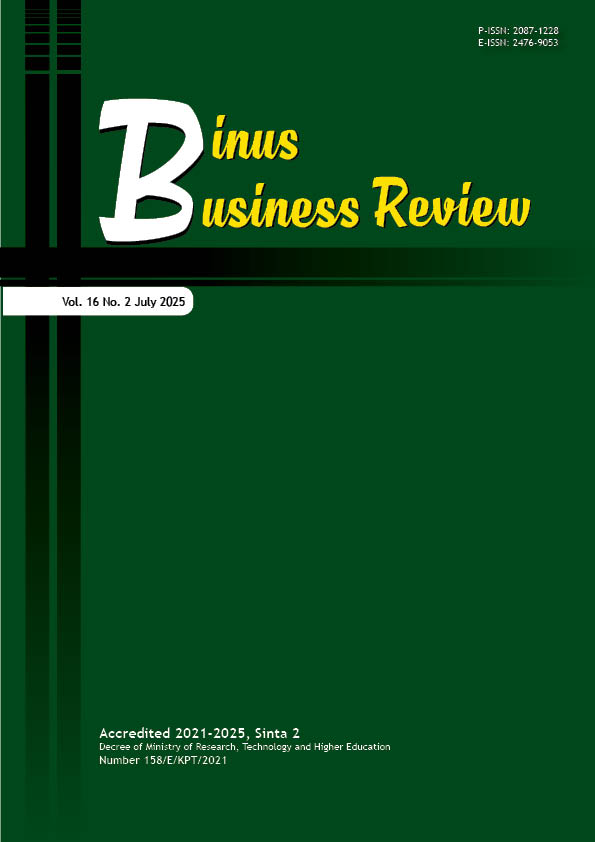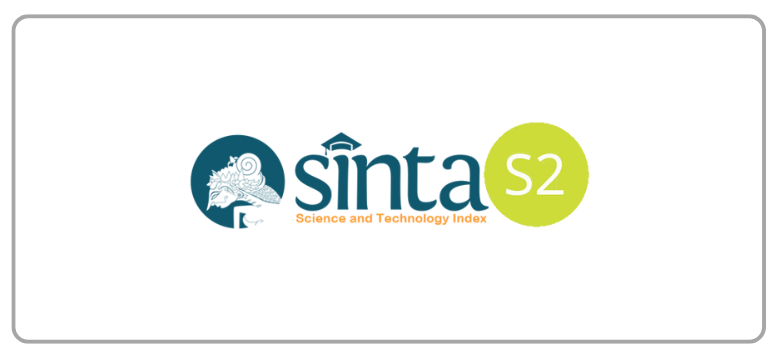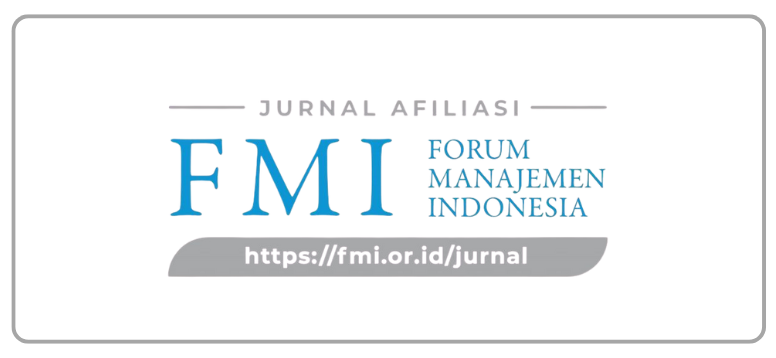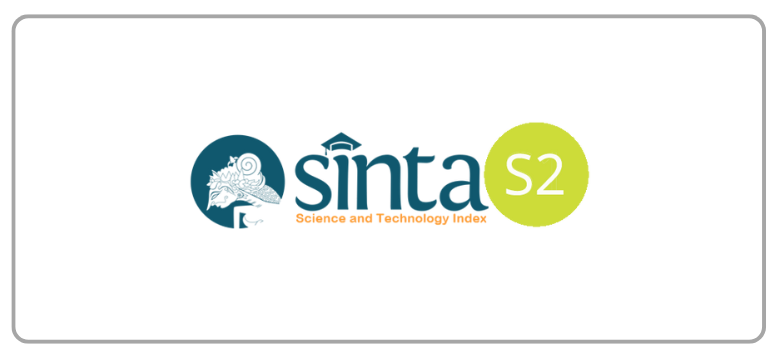Enhancing Sustainable Safety Performance in the Construction Industry: A Total Safety Management Approach
DOI:
https://doi.org/10.21512/bbr.v16i2.9672Keywords:
safety behavior, safety culture, safety performance, sustainable safety management, Total Safety Management (TSM)Abstract
Indonesia’s construction industry is known for high accident rates, underscoring the urgency and practical impact of the research. The research explored the causal relationship between Total Safety Management (TSM), safety culture, safety behavior, and safety performance within Indonesia’s construction sector, aiming to reduce high workplace accident rates. The research uniquely integrated these variables into a unified model tailored specifically to the Indonesian construction context, clearly distinguishing itself from previous research by addressing existing gaps in the literature. Data were collected from 173 staff and managers at contractor companies involved in various construction projects, each respondent having at least one year of relevant industry experience. A structured questionnaire assessed the implementation of safety programs and practices in respondents’ workplaces over a three-month period (March to May 2023). Structural Equation Modeling–Partial Least Squares (SEM-PLS) was employed for rigorous data analysis. Findings indicate that TSM significantly influences both safety culture and safety behavior, with each positively impacting overall safety performance. Specifically, a robust safety culture fosters proactive safety behaviors among workers, significantly reducing accidents and enhancing safety outcomes. Implementing TSM as a continuous improvement approach effectively creates an environment emphasizing worker safety, well-being, and operational effectiveness. The research empirically validates a comprehensive and integrated safety management model using SEM-PLS, providing practical recommendations specifically designed to enhance construction safety performance in developing countries. These insights assist industry practitioners in achieving sustainable safety management, reducing workplace incidents, and striving toward zero fatalities.
References
Adiratna, Y., Astono, S., Fertiaz, M., Subhan, Sugistria, C. A. O., Prayitno, H., Khair, R. I., Brando, A., & Putri, B. A. (2022). Profil keselamatan dan kesehatan kerja nasional Indonesia 2022. Kementerian Ketenagakerjaan Republik Indonesia.
Akinlolu, M., Haupt, T. C., Edwards, D. J., & Simpeh, F. (2022). A bibliometric review of the status and emerging research trends in construction safety management technologies. International Journal of Construction Management, 22(14), 2699–2711. https://doi.org/10.1080/15623599.2020.1819584
Al-Bayati, A. J. (2021). Impact of construction safety culture and construction safety climate on safety behavior and safety motivation. Safety, 7(2), 1–13. https://doi.org/10.3390/safety7020041
Al Tamimi, A., Ansari, A. Al, Kashwani, G., & Sajwani, A. (2017). Application of “TQM” and “TSM” in UAE construction safety management. Industrial Engineering & Management, 6(3), 1–6. https://doi.org/10.4172/2169-0316.1000220
Álvarez-Santos, J., Miguel-Dávila, J. Á., Herrera, L., & Nieto, M. (2018). Safety management system in TQM environments. Safety Science, 101, 135–143. https://doi.org/10.1016/j.ssci.2017.08.019
Behie, S. W., Halim, S. Z., Efaw, B., O’Connor, T. M., & Quddus, N. (2020). Guidance to improve the effectiveness of process safety management systems in operating facilities. Journal of Loss Prevention in the Process Industries, 68, 1–11. https://doi.org/10.1016/j.jlp.2020.104257
BPJS Ketenagakerjaan. (2023). Laporan tahunan terintegrasi 2023. https://www.bpjsketenagakerjaan.go.id/assets/uploads/laporan_tahunan/Integrated_Report_2023.pdf
Burlov, V. G., Lepeshkin, O. M., Lepeshkin, M. O., & Gomazov, F. A. (2019). The control model of safety management systems. In IOP Conference Series: Materials Science and Engineering (Vol. 618). IOP Publishing. https://doi.org/10.1088/1757-899x/618/1/012088
Caldwell, J. A., Caldwell, J. L., Thompson, L. A., & Lieberman, H. R. (2019). Fatigue and its management in the workplace. Neuroscience & Biobehavioral Reviews, 96, 272–289. https://doi.org/10.1016/j.neubiorev.2018.10.024
Chin, W. W. (2010). How to write up and report PLS analyses. In Handbook of partial least squares: Concepts, methods and applications (pp. 655–690). Springer. https://doi.org/10.1007/978-3-540-32827-8_29
Cooper, M. D., Collins, M., Bernard, R., Schwann, S., & Knox, R. J. (2019). Criterion-related validity of the cultural web when assessing safety culture. Safety Science, 111, 49–66. https://doi.org/10.1016/j.ssci.2018.09.013
Dennis, X., Muthukumaran, V., & Balaji, M. (2015). Total Safety Management (TSM) implementation in an electronic components manufacturing industry. I-Manager's Journal on Instrumentation & Control Engineering, 3(3), 38–44.
Durdyev, S., Mohamed, S., Lay, M. L., & Ismail, S. (2017). Key factors affecting construction safety performance in developing countries: Evidence from Cambodia. Construction Economics and Building, 17(4), 48–65. https://doi.org/10.5130/ajceb.v17i4.5596
Ghahramani, A., & Salminen, S. (2019). Evaluating effectiveness of OHSAS 18001 on safety performance in manufacturing companies in Iran. Safety Science, 112, 206–212. https://doi.org/10.1016/j.ssci.2018.10.021
Gu, J., & Guo, F. (2022). How fatigue affects the safety behaviour intentions of construction workers an empirical study in Hunan, China. Safety Science, 149. https://doi.org/10.1016/j.ssci.2022.105684
Haas, E. J., & Yorio, P. L. (2019). The role of risk avoidance and locus of control in workers’ near miss experiences: Implications for improving safety management systems. Journal of Loss Prevention in the Process Industries, 59, 91–99. https://doi.org/10.1016/j.jlp.2019.03.005
Haas, E. J. (2020). The role of supervisory support on workers’ health and safety performance. Health Communication, 35(3), 364–374. https://doi.org/10.1080/10410236.2018.1563033
Hair Jr., J. F., Hult, G. T. M., Ringle, C. M., Sarstedt, M., Castillo Apraiz, J., Cepeda Carrión, G. A., & Roldán, J. L. (2019). Manual de Partial Least Squares Structural Equation Modeling (PLS-SEM). OmniaScience. https://doi.org/10.3926/oss.37
Hoque, I., & Shahinuzzaman, M. (2021). Task performance and occupational health and safety management systems in the garment industry of Bangladesh. International Journal of Workplace Health Management, 14(4), 369–385. https://doi.org/10.1108/ijwhm-09-2020-0169
Hu, S. H., Wang, T., Ramalho, N. C., Zhou, D., Hu, X., & Zhao, H. (2021). Relationship between patient safety culture and safety performance in nursing: The role of safety behaviour. International Journal of Nursing Practice, 27(4). https://doi.org/10.1111/ijn.12937
Ismail, S. N., Ramli, A., & Aziz, H. A. (2021). Influencing factors on safety culture in mining industry: A systematic literature review approach. Resources Policy, 74. https://doi.org/10.1016/j.resourpol.2021.102250
Jiang, W., Liang, C., & Han, W. (2019). Relevance proof of safety culture in coal mine industry. International Journal of Environmental Research and Public Health, 16(5), 1–14. https://doi.org/10.3390/ijerph16050835
Jung, M., Lim, S., & Chi, S. (2020). Impact of work environment and occupational stress on safety behavior of individual construction workers. International Journal of Environmental Research and Public Health, 17(22), 1–21. https://doi.org/10.3390/ijerph17228304
Kim, N. K., Rahim, N. F. A., Iranmanesh, M., & Foroughi, B. (2019). The role of the safety climate in the successful implementation of safety management systems. Safety Science, 118, 48–56. https://doi.org/10.1016/j.ssci.2019.05.008
Kontogiannis, T., Leva, M. C., & Balfe, N. (2017). Total safety management: Principles, processes and methods. Safety Science, 100, 128–142. https://doi.org/10.1016/j.ssci.2016.09.015
Ladewski, B. J., & Al-Bayati, A. J. (2019). Quality and safety management practices: The theory of quality management approach. Journal of Safety Research, 69, 193–200. https://doi.org/10.1016/j.jsr.2019.03.004
Lee, Y. (2022). How dialogic internal communication fosters employees’ safety behavior during the COVID-19 pandemic. Public Relations Review, 48(1), 1–10. https://doi.org/10.1016/j.pubrev.2022.102156
Leva, M. C., Balfe, N., Kontogiannis, T., Plot, E., & De Michela, M. (2014). Total safety management: What are the main areas of concern in the integration of best available methods and tools. Chemical Engineering Transactions, 36, 559–564. https://doi.org/10.3303/CET1436094
Mambwe, M., Mwanaumo, E. M., Thwala, W. D., & Aigbavboa, C. O. (2021). Evaluating occupational health and safety management strategy success factors for small-scale contractors in Zambia. Sustainability, 13(9), 1–12. https://doi.org/10.3390/su13094696
Narada Katiga Nusantara (2022, February 11). Grafik kecelakaan kerja di Indonesia 5 tahun terakhir. https://www.pelatihank3.co.id/informasi/grafik-kecelakaan-kerja-diindonesia-5-tahun-terakhir.html
Newaz, M. T., Ershadi, M., Jefferies, M., & Davis, P. (2021). Assessing safety management factors to develop a research agenda for the construction industry. Safety Science, 142. https://doi.org/10.1016/j.ssci.2021.105396
Nkrumah, E. N. K., Liu, S., Doe Fiergbor, D., & Akoto, L. S. (2021). Improving the safety–performance nexus: A study on the moderating and mediating influence of work motivation in the causal link between Occupational Health and Safety Management (OHSM) practices and work performance in the oil and gas sector. International Journal of Environmental Research and Public Health, 18(10), 1–23. https://doi.org/10.3390/ijerph18105064
Quenon, J. L., Vacher, A., Faget, M., Levif-Lecourt, M., Roberts, T., Fucks, I., ... & Pourin, C. (2020). Exploring the role of managers in the development of a safety culture in seven French healthcare facilities: A qualitative study. BMC Health Services Research, 20, 1–11. https://doi.org/10.1186/s12913-020-05331-1
Ramos, D., Afonso, P., & Rodrigues, M. A. (2020). Integrated management systems as a key facilitator of occupational health and safety risk management: A case study in a medium sized waste management firm. Journal of Cleaner Production, 262. https://doi.org/10.1016/j.jclepro.2020.121346
Sarstedt, M., Ringle, C. M., Henseler, J., & Hair, J. F. (2014). On the emancipation of PLS-SEM: A commentary on Rigdon (2012). Long Range Planning, 47(3), 154–160. https://doi.org/10.1016/j.lrp.2014.02.007
Sarstedt, M. (2019). Revisiting Hair et al.’s multivariate data analysis: 40 years later. In The great facilitator: Reflections on the contributions of Joseph F. Hair, Jr. to marketing and business research (pp. 113–119). Springer. https://doi.org/10.1007/978-3-030-06031-2_15
Sarstedt, M., Hair Jr., J. F., Cheah, J. H., Becker, J. M., & Ringle, C. M. (2019). How to specify, estimate, and validate higher-order constructs in PLS-SEM. Australasian Marketing Journal, 27(3), 197–211. https://doi.org/10.1016/j.ausmj.2019.05.003
Shalimova, А. V, Filin, A. E., & Davydenko, A. A. (2019). Analysis of evaluation results of occupational health, industrial and environmental safety management systems at enterprises of mining and smelting complex. In Topical issues of rational use of natural resources 2019. CRC Press. https://doi.org/10.1201/9781003014577-13
Skład, A. (2019). Assessing the impact of processes on the occupational safety and health management system’s effectiveness using the fuzzy cognitive maps approach. Safety Science, 117, 71–80. https://doi.org/10.1016/j.ssci.2019.03.021
Su, W. J. (2021). The effects of safety management systems, attitude and commitment on safety behaviors and performance. International Journal for Applied Information Management, 1(4), 187–200. https://doi.org/10.47738/ijaim.v1i4.20
Talapatra, S., Santos, G., Uddin, K., & Carvalho, F. (2019). Main benefits of integrated management systems through literature review. International Journal for Quality Research, 13(4), 1037–1054. https://doi.org/10.24874/ijqr13.04-19
Turner, B. A. (2000). The development of a safety culture. In Risk management. Routledge. https://doi.org/10.4324/9780429282515-27
Wang, L., & Cheng, Y. (2022). Exploring a comprehensive knowledge map for promoting safety management research in the construction industry. Engineering, Construction and Architectural Management, 29(4), 1678–1714. https://doi.org/10.1108/ecam-11-2020-0984
Wang, Q., Mei, Q., Liu, S., Zhou, Q., & Zhang, J. (2019). Demographic differences in safety proactivity behaviors and safety management in Chinese small–scale enterprises. Safety Science, 120, 179–184. https://doi.org/10.1016/j.ssci.2019.06.016
Winge, S., Albrechtsen, E., & Arnesen, J. (2019). A comparative analysis of safety management and safety performance in twelve construction projects. Journal of Safety Research, 71, 139–152. https://doi.org/10.1016/j.jsr.2019.09.015
Xian-Zhong, L. (2017). Discussion on safety production and construction safety management of construction enterprises. World Construction, 6(3), 27–32.
Yiu, N. S. N., Chan, D. W. M., Sze, N. N., Shan, M., & Chan, A. P. C. (2019). Implementation of safety management system for improving construction safety performance: A structural equation modelling approach. Buildings, 9(4), 1–18. https://doi.org/10.3390/buildings9040089
Downloads
Published
How to Cite
Issue
Section
License
Copyright (c) 2025 Rita Ambarwati, Handaru A. Putra, Dedy, Wiwik Sulistiyowati, Boy Isma Putra

This work is licensed under a Creative Commons Attribution-ShareAlike 4.0 International License.
Authors who publish with this journal agree to the following terms:
a. Authors retain copyright and grant the journal right of first publication with the work simultaneously licensed under a Creative Commons Attribution License - Share Alike that allows others to share the work with an acknowledgment of the work's authorship and initial publication in this journal.
b. Authors are able to enter into separate, additional contractual arrangements for the non-exclusive distribution of the journal's published version of the work (e.g., post it to an institutional repository or publish it in a book), with an acknowledgment of its initial publication in this journal.
c. Authors are permitted and encouraged to post their work online (e.g., in institutional repositories or on their website) prior to and during the submission process, as it can lead to productive exchanges, as well as earlier and greater citation of published work.
USER RIGHTS
All articles published Open Access will be immediately and permanently free for everyone to read and download. We are continuously working with our author communities to select the best choice of license options, currently being defined for this journal as follows: Creative Commons Attribution-Share Alike (CC BY-SA)





















